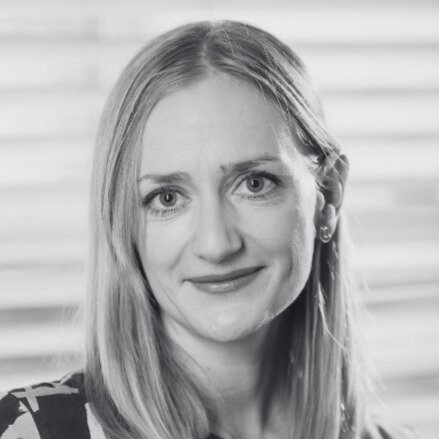How Mortgage Rates Are Set and What Influences Them

DIRECTOR AND MORTGAGE ADVISER
Specialist broker for high-earning professionals and complex income cases.
Whether you’re buying your first home, moving up the ladder, or remortgaging, mortgage rates play a big role in shaping your monthly costs. But how are those rates actually set—and why do they fluctuate?
For high-earning professionals, especially those borrowing large sums or navigating complex income structures, understanding the drivers behind mortgage pricing can help you make smarter decisions.
Request your fee free mortgage consultation today. No obligation, just sound advice.
The Key Ingredients Behind Mortgage Rates
Mortgage rates are set by lenders based on several interconnected factors. The main influences include:
Bank of England base rate – This is the biggest driver of tracker and variable mortgage rates. When the base rate rises, so do mortgage costs—usually within weeks.
Swap rates – These are the rates at which banks lend to each other for fixed terms. Lenders use them to price fixed-rate mortgages.
Lender funding costs – This includes the cost of borrowing from markets, deposits, or internal capital.
Risk appetite – Lenders adjust rates based on how much risk they’re willing to take with different borrower types or loan-to-value (LTV) ratios.
Operational costs and margins – Each lender has its own commercial targets, which feed into pricing.
Why Rates Vary Between Lenders (Even on the Same Day)
You might see one lender offering 4.99% while another offers 5.39%—for the same fixed term and LTV. Why?
Lender strategy – Some want to grow market share in certain segments (e.g. first-time buyers, high-net-worth, offset products)
Risk tolerance – A bank comfortable with foreign income or high bonus reliance might price more aggressively for professionals
Underwriting complexity – Simpler cases are often cheaper to price. Complex cases may attract a premium even with strong income
Application volumes – If a lender has a backlog, they may raise rates temporarily to manage demand
How We’ve Helped Clients Like You
These clients faced similar challenges - here’s how we helped them secure the right deal.
An IT Sales Director and Teacher with two children needed £800k to upsize to a £1.2m home. We secured 5.5x income using 100% of bonuses and structured part of the loan on interest-only — keeping monthly payments affordable with a plan to reduce the balance using future bonuses.
A UK expat returning from Dubai secured an £800k mortgage using their UK employment contract. By avoiding the need to rent first, they moved straight into their new home — making their transition back to the UK smooth and stress-free.
A newly qualified legal associate and their partner, both first-time buyers, used 60% of a single year’s bonus to boost borrowing by £175k. This transformed their options, allowing them to buy a flat with a second bedroom and a garden instead of compromising on space.
A UK-based EU national remortgaged to release equity for a home extension. We secured a lender who applied only a 10% haircut to their euro income, maximising borrowing and allowing their renovation plans to move forward without compromise.
A law firm partner buying a £1.9m home needed £1.4m in lending. We secured a lender who used their latest year’s profit share — instead of averaging two years — unlocking the borrowing needed and delivering a deal that matched their career trajectory.
A dentist on a Tier 2 visa bought their first UK home for £1.3m with a 15% deposit. We secured an £1.1m mortgage, managed the process end-to-end for this time-poor professional, and found a lender that understood both their visa and high-value borrowing needs.
A contractor with only six months’ experience and no accounts was told to wait. We used day rate × 5 × 46 to evidence income and secured 5x that figure — delivering a £540k mortgage on a £650k home so he could buy now instead of delaying.
A euro-paid tech executive buying his first home needed a 90% mortgage on an £825k property. We used our foreign currency expertise and extended the term to age 75, guiding him through the process so he could relax knowing his mortgage was in safe hands.
A newly promoted equity partner at a US law firm needed £1.5m quickly to buy a £2m home. We used fixed drawings plus projected profit share to secure a better deal than a private bank, leveraging our lender contacts to fast-track approval and win the property.
US-UK couple, paid in USD via a US LLC, were declined by their bank. We evidenced stable net profits and distributions, matched them with a lender that accepts foreign currency income, and secured a remortgage to release equity for major renovations.
A young media sales exec with a modest base salary and strong commission was struggling to find a lender. We used a recent 3-month commission average to secure 5.5x income — unlocking a 90% mortgage on a £650k home with a manageable repayment structure.
A tech startup founder was repeatedly told he couldn’t borrow due to being “self-employed” with low historic income. We dug deeper, reclassified him as a PAYE employee, and unlocked a mortgage based on current earnings — helping his growing family move home.
A North London couple, one an in-house lawyer and the other a software engineer, needed to upsize to a home requiring major renovation — but still live in their current property during the works. We structured a two-property mortgage plan using interest-only loans, bonus income, and an offset facility to make it all work smoothly.
A UK national working in Saudi Arabia was about to roll onto his lender’s standard variable rate (a much higher default rate after a fixed deal ends). We secured a new 1-year fix with his current lender just in time, saving money and locking in certainty while he remained overseas.
Two doctors with young children needed a mortgage for their dream home in Oxfordshire. We used variable locum income, maternity return projections, and an interest-only element to keep payments manageable during high childcare years — securing 85% LTV on a £900k home.
An Italian CTO earning in Swiss francs and living between Zurich and London needed to refinance his UK home. We secured a competitive high street mortgage using 100% of his foreign income—overcoming currency and age-related challenges to replace an inflexible international loan with a cost-effective long-term solution.
We helped a newly promoted non-equity partner at a US-headquartered law firm secure a £2.48m mortgage on an £3.1m purchase. By structuring the loan with a mix of repayment and interest-only borrowing, we kept monthly costs manageable while meeting complex income requirements including USD bonus earnings.
We helped a law firm associate refinance his home and buy out a former partner by leveraging his most recent bonus income and a high 5.5x loan-to-income multiple. Our tailored approach allowed him to maximise borrowing and stay in his property—without the disruption or cost of moving.
An international lawyer buying his first home in London faced challenges due to a low personal deposit, reliance on bonus income, and a long lead time to completion. We secured a competitive 90% mortgage using the developer incentive, included offer flexibility, and ensured affordability—despite limited bonus history.
A young contractor, told he needed two years of accounts, came to us seeking a 95% mortgage on a £600k property. Using his current contract and smart structuring, we secured the loan with low monthly payments—enabling him to buy now, refurbish, and remortgage on better terms later.
Fixed, Tracker, or Discount—What Do They Really Mean?
There are three main types of mortgage rate structures:
Fixed rate – You lock in a rate for 2, 5, or 10 years. Your payments stay the same, regardless of market changes.
Tracker rate – Moves up and down with the Bank of England base rate, usually with a small added margin.
Discount rate – A discount off the lender’s Standard Variable Rate (SVR), which can change at the lender’s discretion.
Each has pros and cons. Fixed rates offer certainty, while tracker or discount deals can be cheaper—if rates fall or remain stable.

Speak To An Expert Today
Get in touch for a fee free, no-obligation chat about how we might be able to help you.
How Professionals Can Secure Better Rates
Even in a volatile market, there are ways to access more favourable pricing:
Use a broker – Some of the best rates aren’t available directly. Specialist brokers can access exclusive or bespoke deals.
Improve your profile – Larger deposits, low debt levels, or clean credit files give lenders more confidence.
Consider timing – Lock in rates during calm periods or just before expected Bank of England moves.
Be flexible on structure – Some lenders offer lower rates for interest-only, offset, or part-repayment loans if they suit your situation.
Why Rate Isn’t Everything
While rate is important, don’t overlook other key factors:
Early repayment charges (ERCs) – Some low-rate deals come with heavy penalties if you move early
Flexibility – Features like overpayments, offset accounts, or portability can add long-term value
Underwriting approach – Especially for bonuses, Restricted Stock Units, or drawdown income, the right lender might offer a better structure, even if the rate is slightly higher
Your ideal mortgage is the one that balances cost, flexibility, and fit for your income—not just the cheapest headline rate.
What Our Clients Say
Kite Mortgages were brilliant from start to finish. With most of my income coming from bonuses, I’d expected the mortgage process to be painful, but David and…
David was really helpful. Provided clear advice on my own mortgage and also helped provide advice to me when my buyers had issues securing a mortgage…
We couldn't be more impressed with the service from our David Walsh! He stepped in and handled everything with incredible speed and professionalism, making…
David has been great. He was very responsive, he found the right deal, and he helped me (successfully!) navigate a few curveballs on the journey!
Mr. Simon Hart helped us during the process of purchasing our first home. As complete new to the experience, we asked many questions and Simon…
Highly recommend! David was a huge help to us as first time buyers. All our options were presented clearly and quickly. David provided excellent advice which…
I am a first time buyer and not originally from the UK so the whole process of buying was pretty new to me. I found Kite Mortgages online which connected me with Simon…
I highly recommend David and his team at Kite Mortgages. David has helped me secure mortgage finance for two homes now, and recently helped…
David and the team at Kite mortgages have been fantastic. They helped us secure mortgage finance for our home and a seamless subsequent…
During a difficult purchase, David was everything we needed from a mortgage broker. He presented us with the best options and took his time to talk us through the…
I was put in touch with Simon Hart at Kite Mortgages by my estate agents Alex & Matteo to help with the purchase of my first property. Simon was super responsive…
We found David/Kite through google search. This was our first purchase so we quite nervous and naive of the process. But we had excellent service throughout…
David was a calm, extremely knowledgeable and very reliable voice throughout the entire process of buying my first flat. He explains complicated and unfamiliar…
David at Kite Mortgages has helped me out on multiple occasions to get the best deal for re-financing. Excellent communication and always quick to respond. I wouldn't…
Conclusion: Mortgage Rates Reflect More Than Just the Base Rate
Rates move for many reasons—from economic conditions to lender strategy. As a professional borrower, the key isn’t just watching rate headlines—it’s working with someone who knows how to position your case for the best outcome.
Need help navigating rate options or securing a competitive deal?
We help high-earning professionals secure smart, tailored mortgages that work—whatever the market’s doing.
Request your fee free mortgage consultation today. No obligation, just sound advice.
FAQs
-
Rising inflation led the Bank of England to increase the base rate—pushing up both tracker and fixed mortgage rates.
-
Yes. If inflation falls and the base rate drops, fixed and variable rates may ease—but lenders often move cautiously.
-
It depends on your risk tolerance, cash flow, and view on rates. Fixed offers stability, while variable may offer savings if rates fall.
-
Not always, but they may offer more flexibility on structure and income—especially valuable for high earners with complex compensation.
-
Some brokers can access exclusive pricing or negotiate better terms on large loans or specialist cases. Always ask.
Related Articles
What can lawyers really borrow? We explain how lenders treat PAYE, bonuses and LLP profit share, when enhanced income multiples apply, and the practical levers that move affordability—plus worked examples and a clear prep checklist.
Equity partners face a different mortgage paperwork journey. This guide lists the documents lenders usually want—general, LLP‑specific and scenario‑based—so you can package your case cleanly and avoid delays.
For high‑net‑worth borrowers, timing your remortgage is about more than chasing a headline rate. We cover when to review, how ERCs and lender windows work, and the HNWI‑specific triggers that can make an early move worthwhile.
Offset mortgages let your savings sit alongside your mortgage, reducing the interest you pay without locking cash away. For lawyers and consultants with bonuses, drawings or contract gaps, that flexibility can be a smart edge—if the setup fits.
Even high earners get tripped up. Avoid the big pitfalls: assuming all income counts, switching jobs mid-application, filing tax returns late, hiding credit commitments, or going direct to the wrong lender. Nail strategy and paperwork for smoother approval.
Paid in RSUs? Not all lenders will count them. This guide explains who accepts RSU income, what evidence you’ll need (vesting history, statements, cash proceeds), how much typically counts, and when a specialist or private bank can unlock higher affordability.
Got a bonus? Turn it into borrowing power: add it to your deposit to lower LTV, unlock sharper rates and wider lender choice. Learn what evidence lenders need, when to use it upfront vs overpay/offset, and how to keep liquidity without hurting terms.
Are you a doctor, lawyer, accountant or consultant? Some lenders offer enhanced income multiples—5× to 5.5× (and sometimes 6×) for strong profiles. Learn who qualifies, what evidence helps, and how a broker can maximise affordable borrowing.
High net worth with complex income? Discover the best mortgage routes—from private bank lending to interest-only, asset-backed and offset options. Learn how AUM, foreign income and bespoke structures can unlock flexible, high-value UK borrowing.
Lawyer looking to borrow more? This guide shows how associates, salaried partners and equity partners can present income, time applications and trim outgoings to boost affordability—so lenders fairly reflect bonuses, profit share and your career progression.
Wondering whether a private bank or high street lender suits you? This guide compares underwriting, income treatment and flexibility—so professionals with complex earnings, £1m+ borrowing or overseas assets can choose the route that offers the best fit, pricing and control.
Choosing between fixed and tracker? This guide shows how fixed-rate certainty compares with tracker flexibility for high-earning professionals—especially with bonuses, drawdown income or moves. Learn about payment stability, ERCs and overpayments.
As an LLP partner, your income structure can complicate mortgage applications — but the right lenders understand fixed drawings and profit share. This guide explores which mortgage options work best and how to maximise borrowing from day one.
Mortgage rates don’t just move with the Bank of England base rate. Lender funding costs, risk appetite, and market competition all play a role. This guide explains what drives rates — and how professionals can time their applications wisely.
Equity partners face distinct mortgage challenges — from complex income structures to timing around distributions. Whether you're newly promoted or established, this guide explains how lenders assess equity income and how to secure the best deal.
From bonus-heavy pay to carried interest and deferred comp, finance professionals often face unique hurdles when applying for a mortgage. This guide breaks down which lenders understand your income — and how to maximise your options.
Being self-employed doesn’t mean you automatically need a bigger deposit — but lender policy varies. With the right income proof and presentation, it’s possible to access competitive rates from 10–15% deposit. Here’s what determines what you’ll need.
Drawdown and variable income — like LLP profit shares, bonuses, or RSUs — require careful handling in mortgage applications. Lenders assess stability, history, and documentation. Here’s how it works and what professionals need to know.
For high-earning professionals with complex income, a mortgage broker does more than compare rates — they navigate lender policies, present your case clearly, and unlock options that generic advice can’t. Here’s how they add real value.
Returning expats face unexpected mortgage hurdles — from thin UK credit files to foreign income scrutiny. But with the right lender and smart structuring, first-time buyers moving back to the UK can secure a competitive deal. Here's what you need to know to prepare.
Earning RSUs as part of your pay? Many lenders will count them—if you know how to present the right documents. Learn how RSU income can boost your mortgage borrowing potential.
Offset mortgages link your savings to your loan to reduce interest. Ideal for high earners, self-employed clients, or anyone with cash reserves who wants flexibility and to pay less over time.
Buying a high-value home or have complex income? A private bank mortgage offers flexible lending for high earners, equity partners, and HNWIs whose finances don’t fit standard lender criteria.
Not all income is treated equally by lenders. Learn how bonuses, RSUs, rental income, and day rates are assessed—and how to present your earnings to boost your mortgage borrowing power.
Buying a home on a Tier 2 visa is possible — even without permanent residency. We explain how lenders assess visa holders, what documents you’ll need, and how to maximise your chances of securing a UK mortgage with a 10–25% deposit.
High earners often assume they can borrow more — but lenders focus on income structure, outgoings, and stress testing. Learn how bonuses, RSUs, and lifestyle costs impact affordability, and how to improve your borrowing potential.
Contractor or self-employed and looking for a mortgage? This guide explains how lenders assess different income structures — from day rates to dividends — and what steps you can take to strengthen your application and secure the deal you need.
Earning in a foreign currency while living in the UK? This guide explains how lenders assess overseas income, which documents you’ll need, and how to prepare your mortgage application to avoid delays and maximise approval chances.
Earning bonuses in law or finance? Learn how mortgage lenders treat bonus income, when it counts towards affordability, and how to present your case to borrow more — even after a job change.
Just made partner at a law firm? Your income structure may now look more complex to mortgage lenders. Learn how LLP income is assessed, which documents matter, and how to boost your borrowing power from day one.
YOUR HOME MAY BE REPOSESSED IF YOU DON’T KEEP UP REPAYMENTS ON YOUR MORTGAGE
Kite Mortgages is a trading style of Kite Financial Ltd which is an appointed representative of The Openwork Partnership, a trading style of Openwork Limited which is authorised and regulated by the Financial Conduct Authority.
APPROVED BY THE OPENWORK PARTNERSHIP ON 11/08/2025.
































































